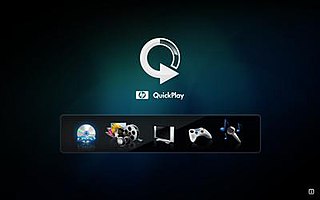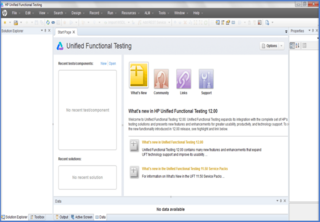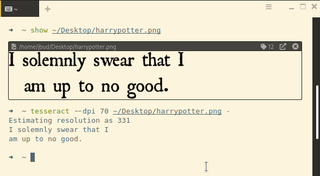 W
WHP ePrint is a term used by Hewlett-Packard to describe a variety of printing technologies developed for (mobile) computing devices, such as smartphones, tablet computers, and laptops.
 W
WFortify Software, later known as Fortify Inc., is a California-based software security vendor, founded in 2003 and acquired by Hewlett-Packard in 2010 to become part of HP Enterprise Security Products. Since 2017, Fortify's products have been owned by Micro Focus.
 W
WHP-UX is Hewlett Packard Enterprise's proprietary implementation of the Unix operating system, based on Unix System V and first released in 1984. Recent versions support the HP 9000 series of computer systems, based on the PA-RISC instruction set architecture, and HPE Integrity Servers, based on Intel's Itanium architecture.
 W
WThe HPLIP project — initiated and led by HP Inc. (HP) — aims to ease Linux systems' ability to interact with HP's inkjet and laser printers with full printing, scanning, and faxing support. As of 2019 the supplied printer-drivers support a total of 2,867 HP printer models; many of these for low-end models are free and open-source (FOSS), licensed under MIT, BSD, and GPL licenses, but others require proprietary binary blobs ("plug-ins"). The project intends that HPLIP work in combination with CUPS and SANE to perform printing and scanning respectively. HPOJ, the HP OfficeJet Linux driver to get HP's OfficeJet printers to run with Linux, ceased development as of 13 March 2006 with the advent of HPLIP.
 W
WNewWave is a discontinued object-oriented graphical desktop environment and office productivity tool for PCs running early versions of Microsoft Windows. It was developed by Hewlett-Packard and introduced commercially in 1988. It was used on the HP Vectras and other IBM compatible PCs running MS Windows.
 W
WOpenVMS, often referred to as just VMS, is a multi-user, multiprocessing virtual memory-based operating system designed for use in time-sharing, batch processing, and transaction processing. It was first announced by Digital Equipment Corporation as VAX/VMS alongside the VAX-11/780 minicomputer in 1977. Since 2014 OpenVMS is developed and supported by a company named VMS Software Inc. (VSI).
 W
WQuickPlay is a technology pioneered by Hewlett-Packard that allows users to directly play multimedia without booting a computer to the main operating system. QuickPlay software, known as QuickPlay or HP QuickPlay is software custom developed for HP by CyberLink Corp. A media component of HP Pavilion Entertainment laptops, QuickPlay is a feature of the dv1000 series and above, including the new Pavilion HDX series of notebooks. QuickPlay is also a feature of many other HP Compaq notebooks. The technology has been emulated by other computer manufacturers such as Dell, Alienware, and Toshiba in various iterations.
 W
WMicro Focus Unified Functional Testing (UFT), formerly known as QuickTest Professional (QTP), is software that provides functional and regression test automation for software applications and environments.
 W
WHP ZCentral Remote Boost, formerly known as HP Remote Graphics Software or HP RGS is a client-server remote desktop software developed by HP Inc. and initially launched in 2003. HP RGS enables remote access to high-performance workstations from many different devices including other Workstations, PCs, Windows tablets, MacBooks and thin-clients. The software is targeted at remote access to graphic intensive applications, Video editing and complex 3D models. Collaboration, or screen sharing, between multiple users, remote USB and sound, as well as Windows and Linux are also supported. HP markets RGS for "Real-Time Collaboration", "Workstation-Class Mobility" and "Remote Workers"
 W
WTesseract is an optical character recognition engine for various operating systems. It is free software, released under the Apache License. Originally developed by Hewlett-Packard as proprietary software in the 1980s, it was released as open source in 2005 and development has been sponsored by Google since 2006.
 W
WTOWER Software was a software development company, founded in 1985 in Canberra, Australia. The company provided and supported enterprise content management software, notably its TRIM product line for electronic records management.
 W
WVisual User Environment is a discontinued desktop environment developed by Hewlett-Packard, intended for use on Unix workstations. VUE is based on the Motif widget toolkit and targets the X Window System.
 W
WwebOS, also known as LG webOS and previously known as Open webOS, HP webOS and Palm webOS, is a Linux kernel-based multitasking operating system for smart devices such as smart TVs that has also been used as a mobile operating system. Initially developed by Palm, Inc., HP made the platform open source, at which point it became Open webOS.